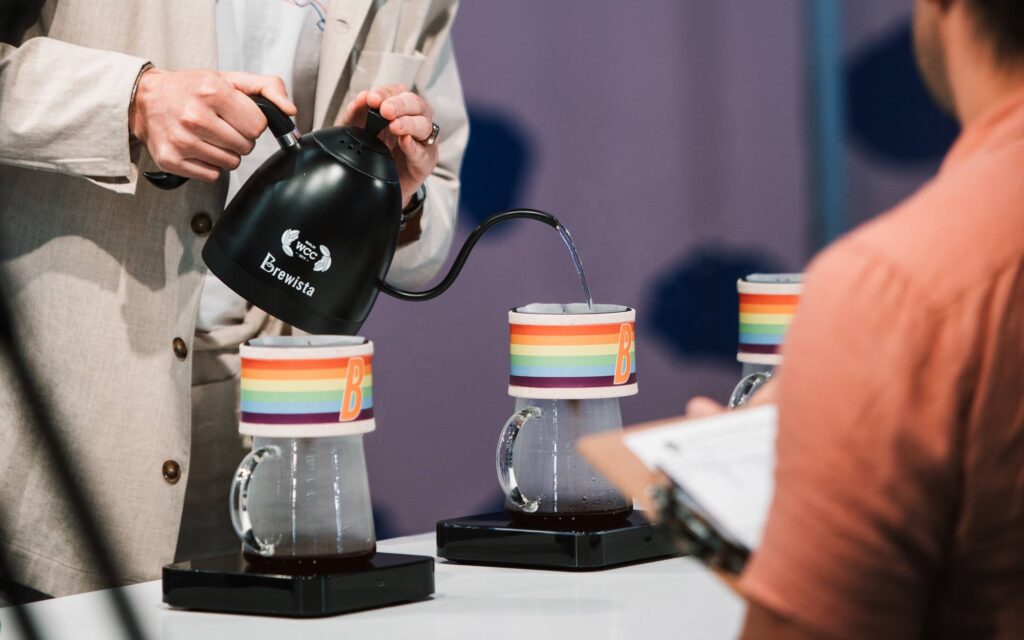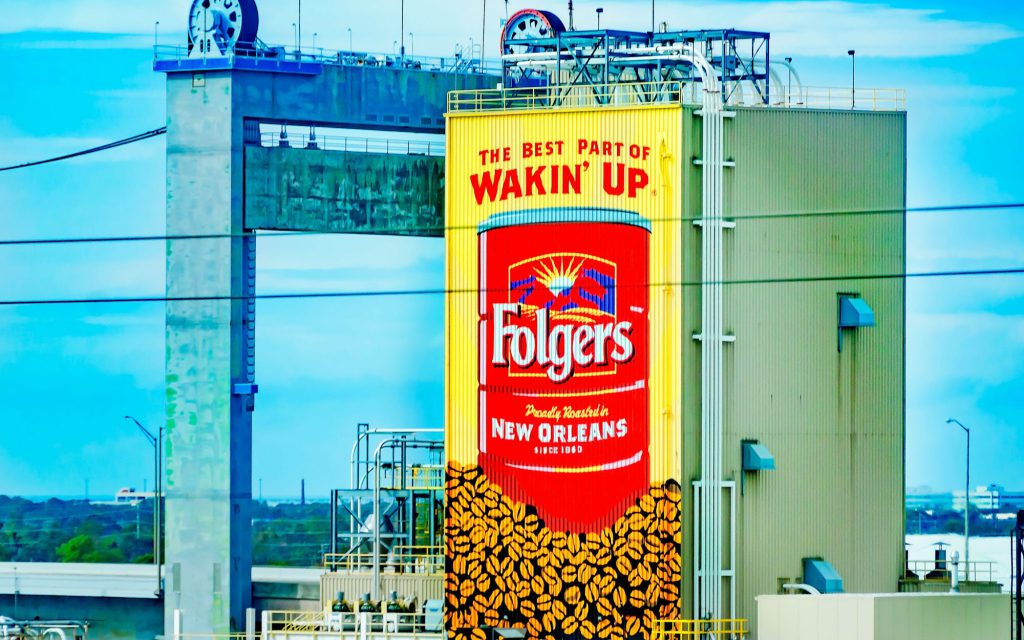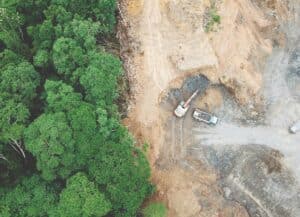How Löfbergs became a Nordic coffee powerhouse
Chairman of the Löfbergs Board and Coffee&Climate initiative, Kathrine Löfberg, on long-term responsibility, and how a small family business has evolved into one of the nordic’s largest, and oldest, coffee roasting enterprises.
There’s one commonality Swedish roaster Löfbergs has shared for the past 117 years with the coffee producers it represents: both operate family-owned businesses and have an entrenched value for human connection.
One is the voice for the other, and for fourth-generation family member, Kathrine Löfberg, that voice is clear and committed.
“I want to establish a community around coffee in the bigger sense of the word, and see the end consumer contribute to [the] fairness of coffee farmers,” Löfberg tells Global Coffee Report.
“I think, and I hope, we will begin to see increased concern and interest from consumers in getting closer to coffee farmers, and knowing the people behind the product, how the coffee is grown, and how they can help take care of the environment and choose coffee that’s traced in the best way.”
Löfbergs sources its coffee directly from origin countries, and is prepared for the European Union’s regulation to collect geolocation coordinates of the land it sources from. However, Löfberg says consumers may not be so interested in businesses that follow certain rules, but are interested in connection.
“I heard from the Swedish professor Hans Rosling many years ago that coffee is one of the products that links the world together, and it really does. We are so involved and connected to people in Central America, South America, East Africa, and Southeast Asia. A lot of people are dependent on coffee, and we have great potential to show much more about the work and people behind it,” she says.
Löfberg believes digitalisation will play a key role in this development, as will the Era of We platform Löfbergs developed in 2021. The end-to-end digital coffee marketplace and social networking service connects stakeholders across the coffee supply chain, allowing farmers to build their own brands, and set their own prices through direct connection to roasters and consumers.
To take transparency even further, Löfbergs was one of the five leading family-owned European coffee companies to form non-profit organisation International Coffee Partners (ICP) in 2001, to help achieve a fair and sustainable coffee sector in all producing countries.
“At that time, as it is [now], it’s very challenging for coffee farmers with [volatile] coffee prices. They have a lot of [obstacles] and can be quite lonely in their business if they’re not in a bigger organisation, like a cooperative,” Löfberg says.
Over the years, the ICP, now a group of eight businesses, has worked with organisations to improve coffee quality, productivity, and the selling of coffee. It has developed open and transparent methodologies that focus on livelihoods, including topics such as gender, youth, biodiversity, and more, reaching over 110,000 smallholder families in 13 countries since its establishment.
“We have a methodology that’s very open and transparent because I think we can inspire others,” Löfberg says. “We are competitors in this group, but when we come together, we leave business outside. Since we have taken a long-term view on our concern for the coffee industry, and the people growing it, it’s been a good example of how much we can achieve when we work together in partnership rather than ourselves – which is true of number 17 of the United Nations’ Sustainable Development Goals.”
Löfberg was Chair of the ICP for seven years before taking the Chair position of the coffee&climate (c&c) project, an initiative under the ICP that invites other companies outside of the founding partners to join the sustainable plight.
“We want to connect as many people as possible to scale the work we do. At coffee&climate, we aim to help coffee farmers really adapt to climate change. We also work a bit with mitigation, but mostly on adaptation on the situation right now,” she says.
“It’s not about focusing on innovation so much, but spreading already known information that’s out there but hasn’t reached smallholder farmers. For both the ICP and c&c, the focus is on building resilience and strength for when farmers face even lower coffee prices, an adverse weather event or even a pandemic.”
Löfberg say this resilience was tested during COVID-19 with research finding that coffee farmers taking part in ICP projects came out better off as a result of having structures in place on how to handle challenges, along with organisation, preparation, and teamwork.
“They were much, much stronger to handle the situation,” she says. “If their coffee crops were to go down, for example, we would have worked with them on diversification so they could have still an income.”
From little things big things grow.
Kathrine Löfberg’s great grandfather Anders Löfberg founded the company with his two brothers John and Josef in 1906. It started as a small, local business venture selling and trading grocery goods from coffee to spices. It later became a distributor of Citroën cars before the brothers divided the company in 1927.
“My great grandfather [Anders] took the coffee business because it’s what he had been mostly engaged in. One brother took the car business, and the other took the remainder of the company, which was later sold, and the car dealership went down in the 1930s during the economic crisis,” Löfberg says.
“It was my great grandfather’s son who really helped make the company bigger. He increased the market in Sweden, invested a lot in the roastery production, and made a lot of marketing investments. In the 1950s and 1960s Löfbergs became a well-known national brand. I think my great grandfather possibility envisaged that the brand would grow in Sweden, but not to the international scale it has. Fifty per cent of our sales are now outside of Sweden.”
Kathrine attests Löfbergs’ international growth to her father’s vision and management during the 1980s and 1990s. He worked hard on exporting and acquiring other businesses outside of Sweden in order to escalate growth.
The company expanded to the Baltics, with Estonia Löfberg’s first export market outside of the Nordic region.
“It was a time when Estonia has just declared independence from the Soviet Union in 1991. While many companies in the food and beverage market had entered the market with much lower quantity products for short-term profit, we envisaged a long-term prospect. We built a good market presence because people could trust that we delivered good quality from the beginning, and that’s stayed the same,” Löfberg says.
The company also expanded to the United Kingdom, which Löfberg says has become an interesting market with increased coffee consumption that’s evolved from instant-coffee to espresso-based beverages, and filter consumption. Growth in the UK retail market is also fuelled by Löfberg’s partnership with supermarket retailers Tesco and Waitrose.
“We still have potential to grow in existing markets and in Northern Europe. We also have some customers like IKEA who are taking us [as their roasting partner] all over the world,” Löfberg says.
To sustain the company’s growth with commercial partners and increased retail sales, Löfberg invested in a new drum roaster and roastery two years ago, designed specifically for whole bean production. This was the largest investment in the history of the company.
Making her own mark.
The Löfberg family grew up in the village of Karlstad in the heart of Sweden, in proximity to its head office and roastery. Today, it is still responsible for more than 90 per cent of production output. Growing up, Löfberg would visit the factory, and recalls seeing bags of stacked coffee, and the aroma of roasting coffee wafting through the village streets.
“As a child, I knew there was lots of coffee around, but I didn’t think it was anything special. I thought everyone had the same number of coffee machines in their family kitchen,” Löfberg says.
“I do recall being woken by my father at 7am on family vacations, where we would go sailing in Sweden, and he would still call the factory daily to check on coffee prices. There were no mobile phones, it was all through radio communication the ships used.”
Her father was company CEO for a long time, and would travel to origin often, bringing home different coffee products from his adventures. Being close to the coffee farmers and those who produce Löfbergs’ product has always been a priority. Löfberg says travelling to origin was challenging in the early 1900s, but something her grandfather did a lot during the 50s and 60s, and her father continued.
It was Löfberg’s first trip to Brazil and the chance to meet coffee farmers, however, that would later become the catalyst to continuing the family linage in an industry she has been devoted to for more than 25 years.
“[Working in the family business was always] in the back of my mind, not as something I should do or have to do later, but an option. We were brought up being urged to do other things. We even had set rules that if you came into the company as an owner, you should have a higher education, work in other places for at least five years, and apply to positions relevant to your background and experience,” she says.
Löfberg forged her own path in banking and IT during the 90s, working and studying overseas, until her father noticed her growing interest in the family company. Her first assignment at Löfbergs was a trip to Norway to set-up the company’s first venue abroad.
“I took the job and after a short while, I said to myself: ‘Why didn’t I do this earlier? It was so much fun, and a good opportunity to learn and see lots of different parts of the business,” Löfberg says.
“I formed a new level of respect for the enormity of work my family had been doing for so long, and it made me reflect on what had made us so successful for many years. We talk about this quite a lot in the [Löfbergs] Group with my siblings. We can learn from our history and have great respect for it, but we never want to be stuck there. I think it’s very important for an older company and older brand to use our history as fuel, but to be looking ahead.”
Just as the next generation of coffee producers need to be inspired, Löfberg says maintaining the energy and fun at Löfbergs for the next succession of family members is also a consideration.
“We talk about trying to inspire the next generation to take over, and instilling the passion for our business, coffee, and people, in order to achieve future growth. It’s too early to say exactly how our children will [be involved] but hopefully they want to continue. We have an ambition to stay as a family business,” Löfberg says.
“Engagement is key. There’s more opportunities and options these days, so we have to be active about [the future] and getting them interested, which was the opposite to [my generation].”
A succession plan is already in place to 2050, but for now, Löfberg is inspired to lead the business as Chair of the Board, and keep being an active voice for the future of sustainable coffee production.
“That we are able to offer great tasting coffee is of course an important driving force. What also motivates me, is when you see results, whether it’s something you do with a co-worker in the roastery; or efforts from work within International Coffee Partners where coffee farmers are really coming out better off; with increased income, for example, so that they can invest in their livelihood,” Löfberg says. “That’s when you know the effort has been worth it.”
This article was first published in the November/December 2023 edition of Global Coffee Report. Read more HERE.
The post How Löfbergs became a Nordic coffee powerhouse appeared first on Global Coffee Report.





Responses